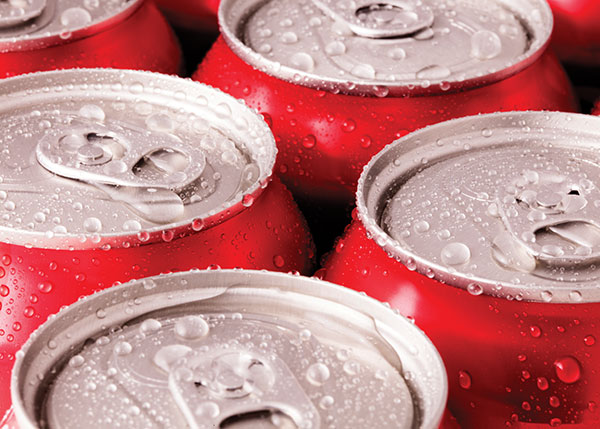
Cool Runnings
November 1, 2023 | By Curtis Bennett
If radiant cooling is installed incorrectly, or the proper precautions are not adhered to, there can be dire consequences.

(Getty Images)
Well, it seems it’s happened again. I electrocuted myself just a little.
How can you electrocute yourself a little bit? Well, I needed to put in a new ceiling fan, as the old one had a small tick, tick , tick and it was very annoying trying to fall asleep.
Anyways, I purchased a new fan and was going to take out the old one and thought, ‘The fan is off, so there is no power going to it.’ There is no switch for it, it has a wireless control, so that is why I proceeded to start disconnecting it after taking it out of the ceiling.
I think you can see where this is going. Taking the marrettes (wire connectors) off and proceeding to touch the wires—that I thought were not live, of course they were.
Luckily, I have one common practice when doing electrical work; I don’t grip any wires hard.
I know that sounds stupid, but the more pressure you put on the wire the more contact it makes and the bigger the path it has to conduct with your body. So, because of this practice, I just got a little bump. Enough to make me squeal and my family knew exactly what happened. I electrocuted myself … again.
Now although I do make light of these situations, they are serious. I hope in my thoughtlessness you can learn a couple things to remember when working with electricity.
Ok so now to the topic at hand: cooling, specifically in-floor or radiant cooling.
I touched on this topic about a year ago in the pages of HPAC (Dew Drop Inn), and I just wanted to talk more about the subject.
Radiant cooling has been around for a long time. The physics are the same as radiant heating.
Have you ever taken something frozen out of the freezer. Dumb question, of course you have, but when you take it out you can “feel” that it is cold even when you are not touching it. Well, that roast or ice cube or whatever it is, is radiating coolness. Sounds like something I used to say about myself—a different type of ‘cool,’ LOL.
Now, why is there not a lot more radiant cooling used in homes and buildings? I believe the reason is installation. You can radiant cool the floor, but to get the convection moving a lot the cold needs to “fall” down, the exact opposite of heat rising.
When you use radiant heating in a floor, it does two things, it radiates heat, obviously, but it also starts some convection due to thermodynamics, heat rising.
Not a lot of convection, like a furnace blower or fancoil moving air, this is natural convection. The problem with radiant cooling only in the floor is that cold air falls, if it’s already at the floor level the air has nowhere to fall to create convection. To get good cooling convection you need the radiator to be in the ceiling. So, this creates a new set of installation issues.
Now don’t get me wrong, I understand that radiation works and works well in providing comfort in a building. That is the main function of radiant cooling and heating. I am just saying that creating convection helps with the effect.
Condensation
 Back to taking things out of the freezer and feeling them—have you ever taken a pop out of the fridge on a hot day?
Back to taking things out of the freezer and feeling them—have you ever taken a pop out of the fridge on a hot day?
What happens to it?
It gets little droplets of water on it. That is the radiant cooling killer: condensation.
This is the same thing that can happen in your radiant cooling applications without the proper controls.
If you cool the floor or radiator down too much the water in the air will start to condense, and if it condenses enough it can actually cause damage. And it’s not just the emitters, any piping needs to be properly insulated.
Radiant cooling applications can pull a lot of water out of the air in the form of condensation. Remember that when you are using cooling, it’s usually hot outside, that’s the reason we are cooling. It’s that differential in temperature that causes the condensation.
The problem is made worse in areas with high humidity. This is the reason why a lot of radiant cooling applications have dehumidification. This helps to take the moisture out of the air so it will not condense on the floor.
Dehumidification is sometimes stage one in commercial cooling applications. We’ve all heard of humidex levels; it’s the temperature that you “feel” with humidity in the air. For example, if the outdoor temperature is 30C and the relative humidity is 50%, then the temperature actually feels like 36C. The temperature you get in the forecast is called a “dry bulb” temperature—not humidity affected. Anyways I veered off a little there.
The other way to not condense in radiant cooling is to calculate the cooling water temperature based on dew point. This needs to be done room by room, and if you have a central cooling location, the room with the highest dew point sets the temperature.
Dew point is defined as the temperature at which air becomes saturated with water. Now keep in mind there is some relative pressure involved and some other physics, but basically the point at which air starts to push out its water molecules, and at that point those water molecules form on cold surfaces. This is why radiant cooling has condensation issues. The floor becomes the pop can you just took out of the fridge. It becomes the surface that the air pushes its water molecules onto.
Ok, so now on to some practical stuff.
Heat pumps are taking the world by storm. I would say they are now becoming mainstream. Yes, they have been around a long time, but they now get a lot of press with “climate change” initiatives and subsidies for efficiency.
The reason for their popularity is not necessarily just because they are more efficient—and I would agree when installed correctly they are for sure—but they have become popular because they can produce heating and cooling from one device.
I had a friend that moved into a house that had a heat pump, and he was told by the previous utility company that looks after it that he gets “free” cooling because he had a heat pump.
He didn’t like it when I laughed out loud.
Now, if the radiant cooling is installed incorrectly, or the proper precautions are not adhered to there can be dire consequences.
I was involved with a house where they had to replace the whole floor because of water damage. The house had radiant cooling in the floor, but they did not control the temperature based on dew point.
They also had wood flooring and it all buckled and shifted because of the water. It’s a slow process, but over time you end up with not only a wrecked floor, but you have the potential for mold build up which is very bad for our health.
Also, heating and cooling wood floors can make the wood expand and contract a lot because of the temperature differential created, just something to think about.
The other issue I have seen with radiant cooling is making sure to only push cold water to the radiant cooling and only hot water to the radiant heating.
Now if they are both in the floor then you don’t have a choice, but if you are designing using two different radiating emitters, then you need to make sure to separate the flows. By this I mean you lose efficiency by pushing warm water to your cooling radiators while waiting for the water to cool down. You are essentially warming them up only to cool them back down.
Now don’t get me wrong, I know it may not be a lot, but over time it does effect efficiency, and this can present an issue when you only have a single storage tank for both hot and cold water.
If the building needs heating and cooling at the same time, make sure there are two tanks. One for heating water and one for cooling water.
I have seen way too many times where the homeowner does not reap the benefits because of installation issues.
Well, I feel like I’ve said just enough to totally confuse you all. My thoughts on this topic get a little scrambled because there is so much that can be done when it comes to radiant cooling.
This I can say. We are getting more and more calls to do radiant cooling applications, not just locally in Canada but North America wide.
It’s coming, but it needs to be done correctly or watch out, you could make rain inside the house.
Don’t guess, call an expert. <>




